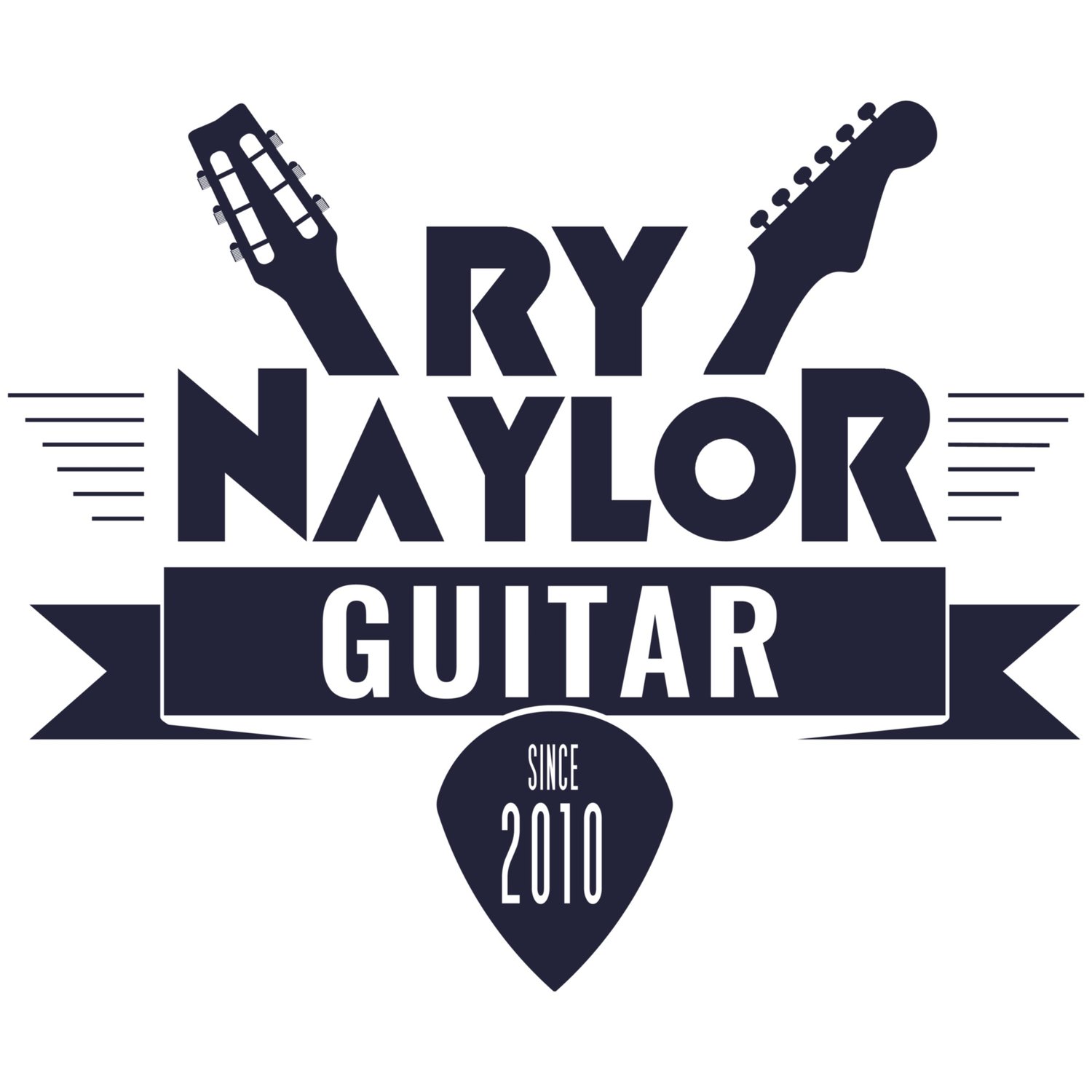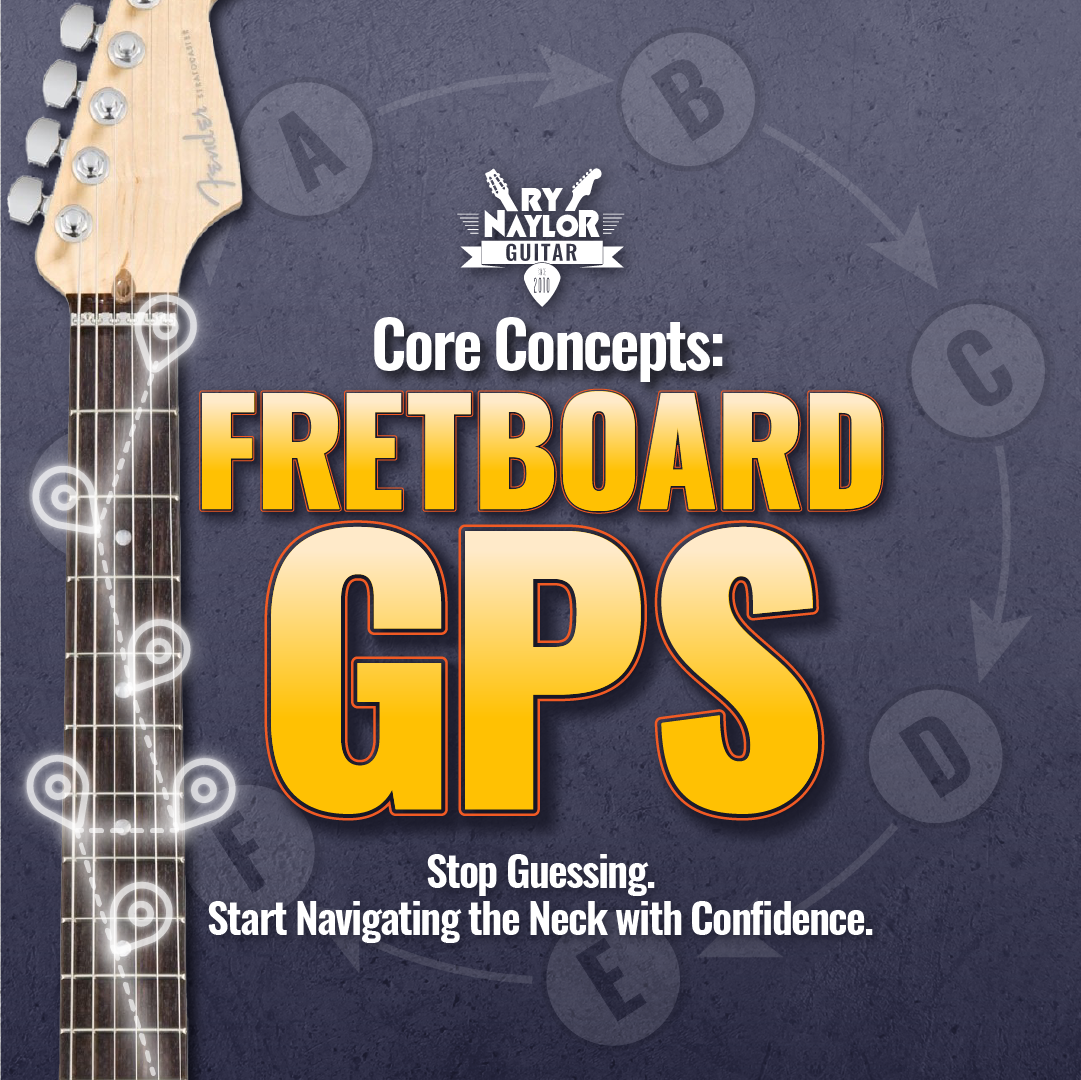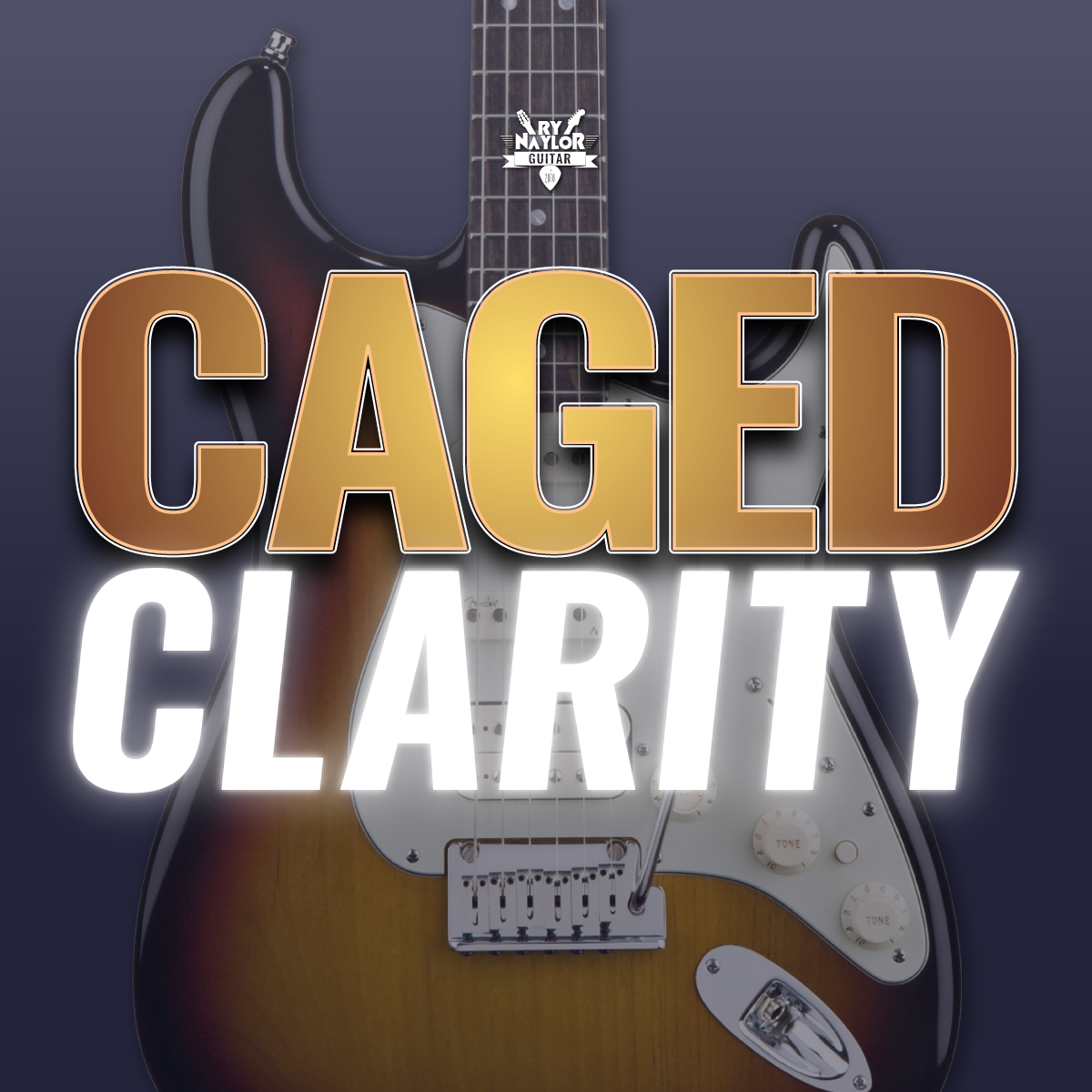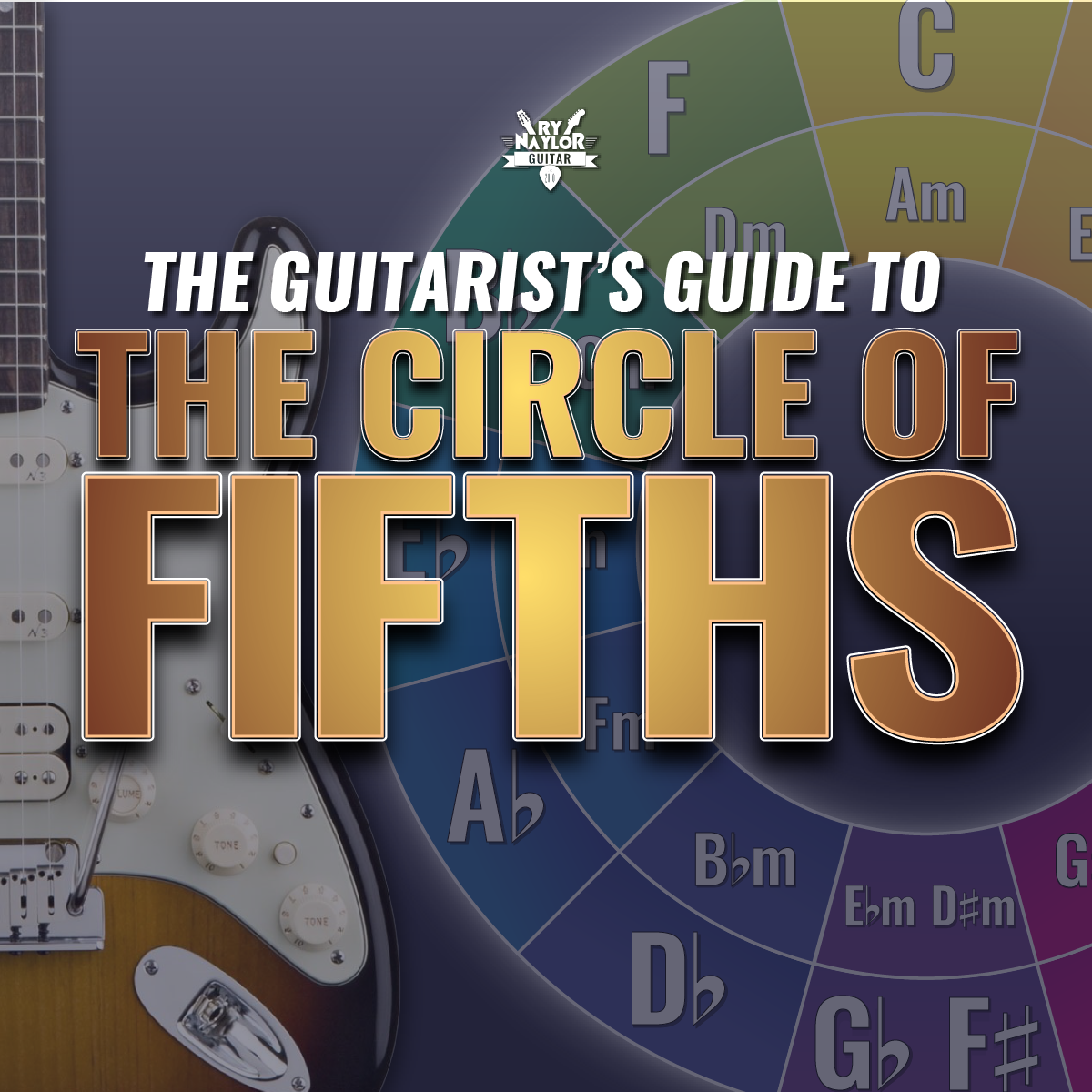Guitar Triad Shapes for Beginners (and beyond)
/Are you bored playing the same chords? Looking for a new direction in your soloing? Guitar triads just might be the answer!
Triads immediately take you out of the stale old cowboy chords. They will open up the fretboard and give you loads of different ways to approach your rhythm playing.
Not only that, but once you can see guitar triads all over the neck they become target notes for your soloing.
In this lesson, I’ll be answering the following questions:
What are guitar triads?
How do you build triads on guitar?
How many guitar triads are there?
How do you learn guitar triads?
What exactly are guitar triads?
The prefix tri- means '3'
Tri-ad = three notes…a chord containing three notes.
Take the first, third, and fifth notes of any major scale and you get a major triad.
For a G major triad (for example) the "chord tones" are G, B, and D.
G is the Root (R)
B is the Third (3)
D is the Fifth (5)
g major triad from the g major scale
Playing these chord tones together makes a G major chord (an example of harmony).
Playing the chord tones individually one at time is a G major arpeggio (melody).
See how, whilst it is played across six strings, the open G major chord only contains the three chord tones (from low to high - R-3-5-R-3-R):
You probably know the barre chord shape from the same G Root note at the third fret of String 6(E). It’s still only the three chord tones (from low to high - R-5-R-3-5-R)
Triads are like open chords or barre chords distilled to its three essential parts, the three chord tones.
How do you build triads on guitar?
Guitar triad shapes are built by grouping a combination of these three chord tones.
These combinations are called triad voicings.
There are commonly two types of guitar triad voicings you should learn:
close voicing; and
spread voicing (also known as an open voicing)
For this lesson, I’ll focus on the close voicings of the G major triad.
The three possible close voicing triads
Close Voicing Guitar Triad
For a close voicing guitar triad, the chord tones will appear as close as they possibly can on neighbouring strings, hence its name.
Three chord tones make three possible voicings of the triad when they are as close as they possibly can be to one another. They are (from low to high in pitch):
R-3-5 (G-B-D) = Root Position
3-5-R (B-D-G) = First Inversion
5-R-3 (D-G-B) = Second Inversion
The String Sets
There are four three-string Sets on which you can make close voicing triads. These are just the names I have given them:
String Set 1 - String 1(E), String 2(B) and String 3(G) [herein SS1]
String Set 2 - String 2(B), String 3(G) and String 4(D) [herein SS2]
String Set 3 - String 3(G), String 4(D) and String 5(A) [herein SS3]
String Set 4 - String 4(D), String 5(A) and String 6(E) [herein SS4]
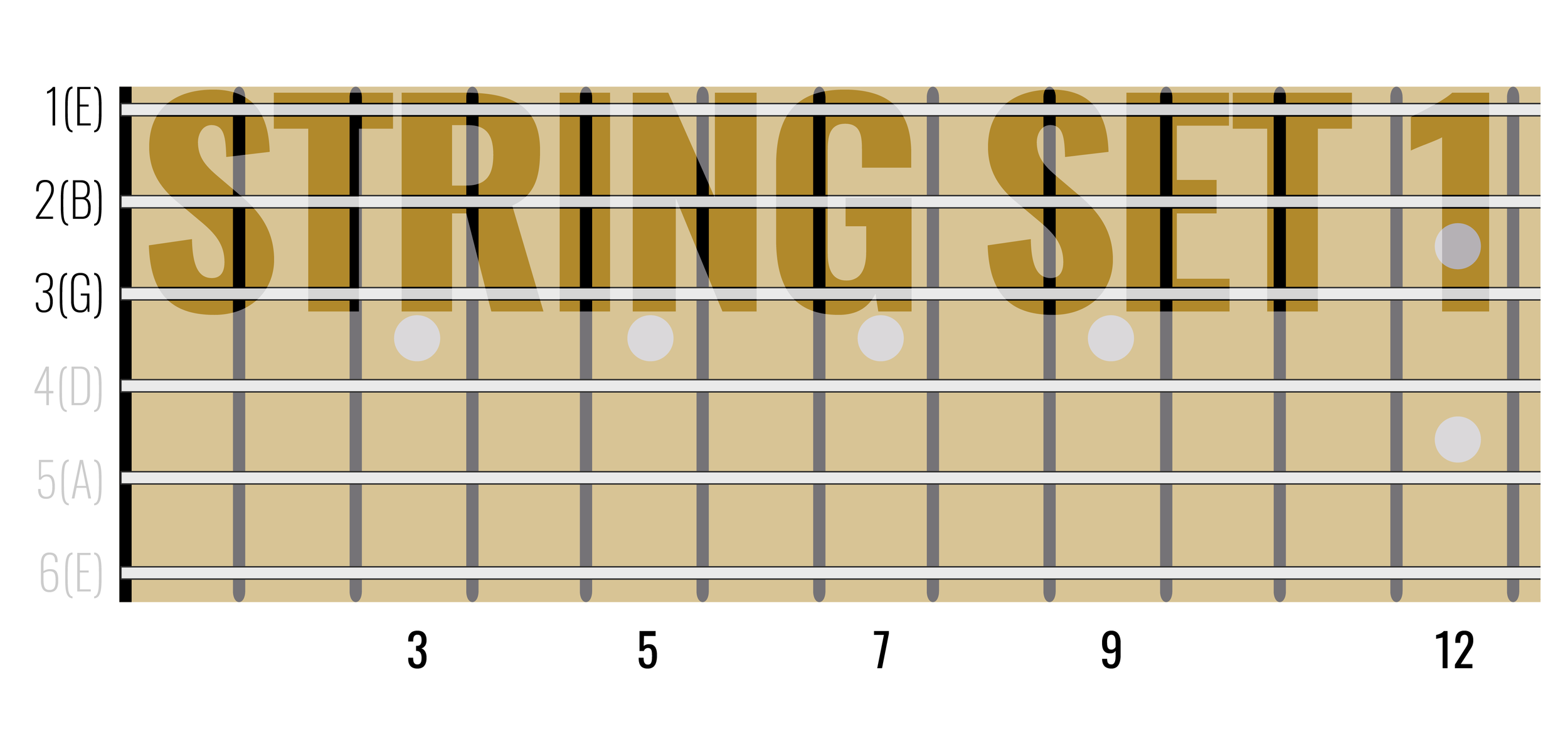

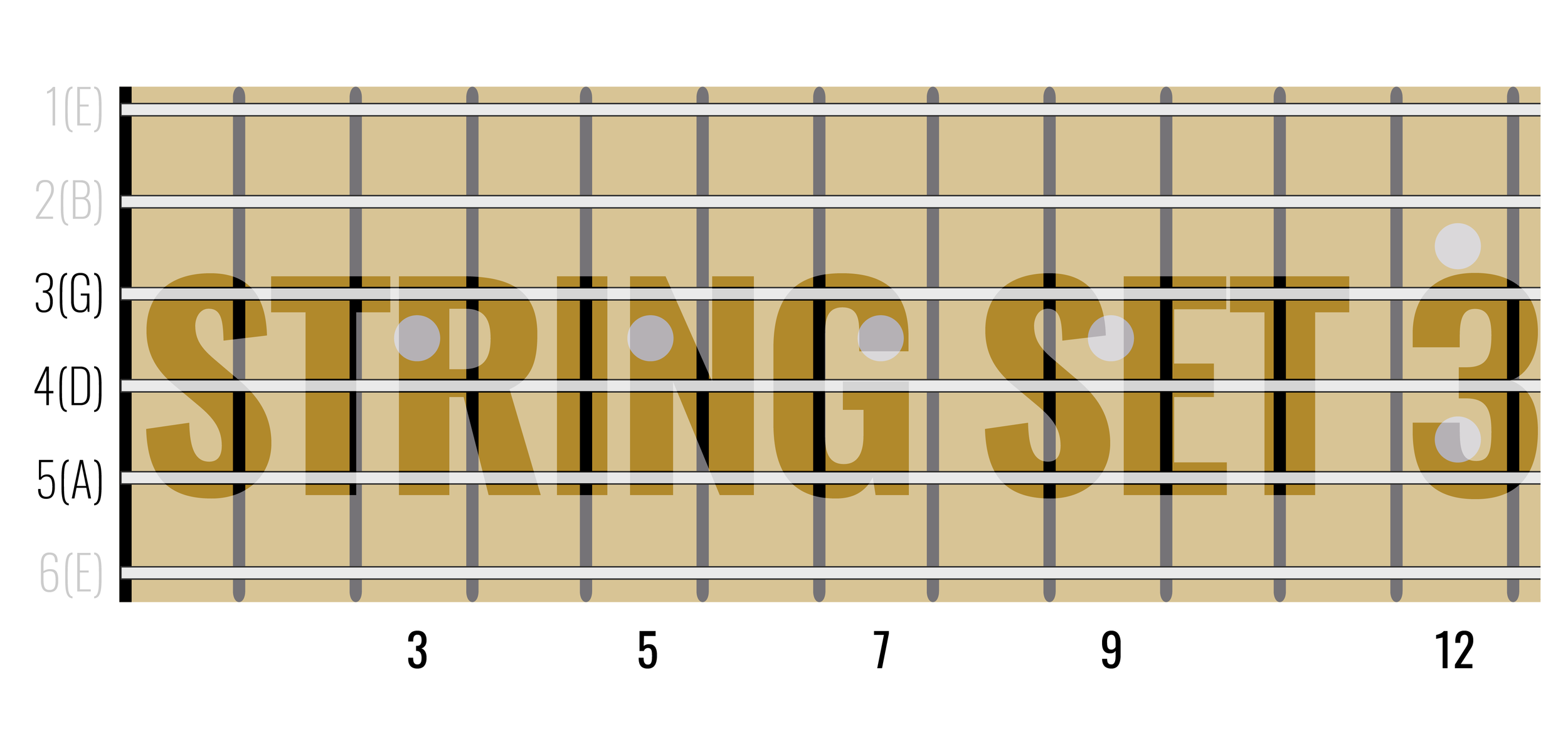

Voicing 1 - Root Position
The ‘root position’ major triad begins (as the name suggests) with the Root note. On the string physically below (towards the floor) you’ll play the third. On the string physically below that you’ll play the fifth (R-3-5 as you look down across the triad).
Here are the four different ways you can play a G major root position triad on each of the 3-string sets (G):
g major triad on each string set
g major triad on each string set (Root POSITION)
Notice that, whilst they look different, the shapes across SS2 and SS3 will be the exact same sound (same pitch). Even if you don’t (yet) read music, see how the notepads in the music above look identical in the second and third measures.
Voicing 2 - First Inversion
The ‘first inversion’ major triad begins with the third as the lowest note. On the string physically below you play the fifth. On the string physically below that you’ll play the Root (3-5-R as you look down across the triad).
It’s as if the Root note of the root position triad has been raised up one octave. The triad has been flipped upside down or ‘inverted’.
As the Root is no longer the lowest note played, this introduces slash chords.
G/B (said “G slash B” or “G over B”) is a G major triad but B is the lowest note played.
Slash chords are = Chord / Bass Note
Here are the four different ways you can play a G major first inversion triad on each of the 3-string sets (G/B):
g major triad on each string set (FIRST INVERSION)
Voicing 3 - Second Inversion
The ‘second inversion’ major triad begins with the fifth as the lowest note. On the string physically below you play the Root. On the string physically below that you’ll play the third (5-R-3 as you look down across the triad).
It’s as if the third of the first inversion has been raised up one octave. The triad has been flipped upside down a second time, hence ‘second inversion’.
The second inversion G major triad will be labelled as G/D - a G major triad with D as the lowest note played.
Here are the four different ways you can play a G major second inversion triad on each of the 3-string sets (G/D):
g major triad on each string set (SECOND INVERSION)
How many guitar triads are there?
3 voicings and 4 String Sets make 12 possible triad shapes, right?
Not quite. There are even fewer to memorize because the shapes on SS3 and SS4 look the same. You can see it (below) with the G/D shapes:
Look back at the other two voicings and see how the shapes are the same on SS3 and SS4.
So you only need to learn three voicings on three string sets…9 shapes!
That’s 9 shapes for the major triad. There are other triads which we’ll be exploring in future lessons. (Knowing the major triads is an excellent foundation to more easily remember the rest).
How do you learn guitar triads?
I’d recommend you start with these close voicing major triads.
Focus your efforts on one String Set at a time. Taking the example of SS1 with the G Root Note.
Your practice is to play horizontally up and down the String Set through the different voicings, like this:
You can take the shapes up higher into the second octave of the fretboard (beyond the 12th fret). I’d definitely recommend (at least) going up to the octave position of the starting triad shape (like you see above).
Begin in free time (no pressure) but then see if you can bring some more focus to your practice by playing the exercise along to a metronome click, taking it as fast as you need to be confident that you have it learned.
Try to learn the location of the chord tones in each voicing (the R, 3 and 5). This will allow you to easily move the triad shapes to different Root notes. It will also help you form the other triad shapes that exist.
You can say as you play. As you pick through the triad shape, say aloud the chord tone “three, five, Root” etc.
You can also randomly test yourself by playing any note on any string (within String Set 1). Let that be your Root note and then try and form the triad shape around it. Repeat until you can’t get it wrong.
How to develop this exercise:
Change your Root note with each practice session (or multiple Root notes on the same day);
Change the String Set, repeating the same exercise(s)
Moving Vertically
As well as working through the triad voicings up and down a string set, you should work on playing through the different inversions vertically across the String Sets.
Here’s an example of that starting from String Set 1 with the G/B:




movng vertically across the string sets
See how the different triad inversions outline the G barre chord shape that we saw at the beginning of the lesson.
For more on how barre chords relate to guitar triad shapes, check out this video lesson:
Next Steps
It’s important to start using the triad shapes to play through chord progressions as soon as possible.
With major triad shapes, a logical progression would use the I (one), IV (four), and V (five) chords in a major key, which will all be major triads.
In the key of G major, that would be the chords of G major, C major, and D major.
The work here is being able to find all three of the triads in one particular area of the fretboard, using different voicings for each of the three chords.
I explain that further in this video lesson:
For More
To help you learn your close voicing triads I have a free triads pdf available to download by clicking here.
Triads Video Course
If you want to really go in deep with your triads study, I have created a comprehensive video course, TRIAD5: INSID3 OUT, taking you from an absolute beginner to triads PRO.
